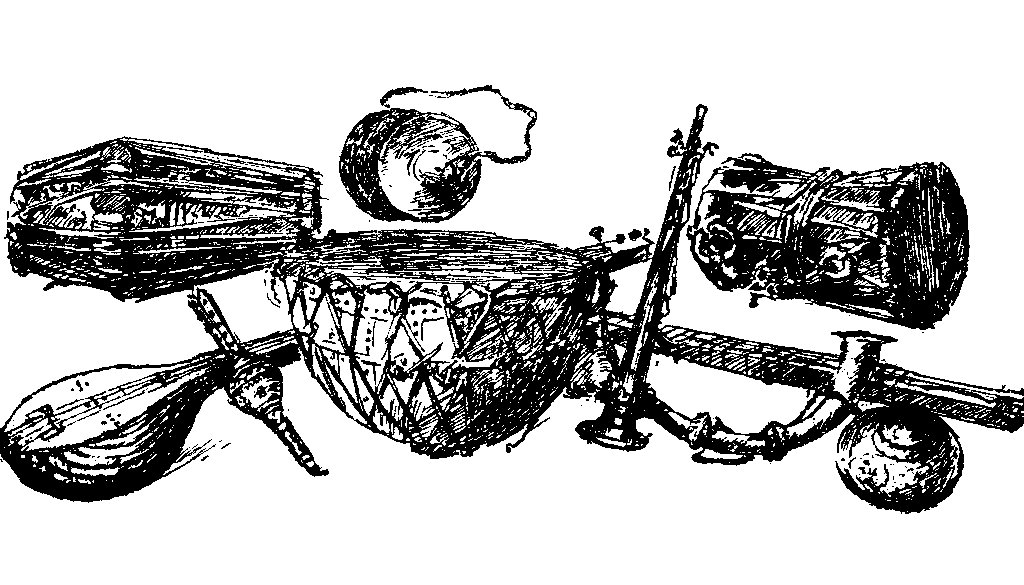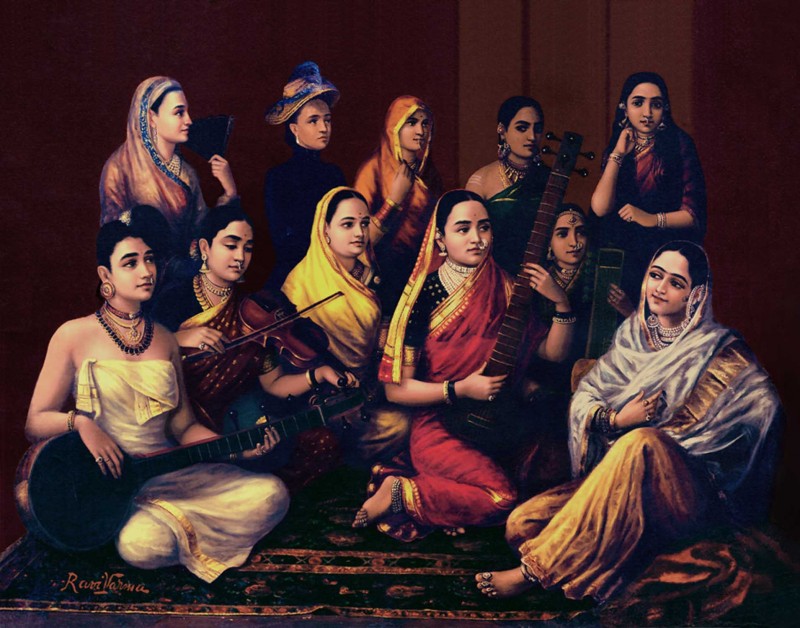By Namratha Erra

It was a pleasant winter night and I was lost in the world of old Hindi melodies as my grandfather’s old tape-recorder was playing his favourite song.
”Guzra hua zamana, aata nahin dubara
Hafiz khuda tumhara
Khushiyaan thi chaar din ki aansoo hain umr bhar ke
Tanhaiyon mein aqsar royenge yaad kar ke
Vo waqt jo ki hamne ik saath hai guzaara
Hafiz khuda tumhara…”
It gave me amusing, serene and spiritual vibes which made me explore the roots and backdrop of music and where I found very interesting excerpts of Indian history and mythology that were worth looking back.
“What is found here may be found elsewhere, but what is not found here cannot be found elsewhere.”
It is largely believed that Indian music has originated from the times when Vedas were created. As the legend goes, Sage Narada was the one who introduced the art of music to the Earth. He is famous for perpetuating divine gossip and is always seen with a tanpura which he uses while he sings the praise of Lord Vishnu. The sound that pervades the whole universe i.e. Nadabrahma (sound of God) itself represents divinity. The representation of music in Hindu religion has always been of paramount importance. Perhaps, classical music evolved from the religious chants and poems which later bloomed through several interfaces between different cultures and civilisations over thousands of years. Of the four Vedas, we have, Sama Veda, is known as the musical Veda. It is a complete text of composed and noted melodies with few descriptions of various aspects of formal music. Almost all the old treaties and music scriptures are believed to be based primarily on the writings in the Sama Veda. One of the oldest music forms known as Sama literally means listening to or hearing.

An important aspect of the Vedic culture was the bard-priests, like Mirabai, who composed hymns or bhajans in praise of God and recited them as they wandered from one temple to another. All the shlokas were not written but handed down from one generation to the next by word of mouth. Later, Bharata Muni codified them in his book ‘Natya Sastra’ which is a detailed compendium of technical instructions about performing arts. The text employs Natya as a generic term, which broadly covers drama, dance and music. It does not treat dance as a separate category of an art form. The text is in the form of elaborate dialogues between the author and a group of sages, who wished to know about Natya-Veda, the knowledge of the performing arts such as dance, music and drama. The author, in response, presents a detailed inquiry in to the various facets of drama including its nature; is origin; its theories, techniques of the theater with all its components of speech, body language, gestures, costumes, décor and the state of mind of the performers, apart from rituals, architecture of theater etc. It is the only book that has details about the history of Indian music and various instruments during Vedic times. Music is known as the fifth Veda; the ancient musical writings are generally spoken of as Gandharva Sastra or Gandharva Veda; the name being given to the celestial musicians.
Among the Hindu deities, Goddess Saraswati is considered the patron goddess of all arts. She is seen holding a classical Veena in one of her four hands and is ascribed to the invention of the seven-tone scale or swara. Lord Krishna is always depicted as carrying a flute and playing mesmerising tunes with it. The holy trinity of Brahma-Vishnu-Mahesh are also not much behind in the realm of music. Lord Vishnu holds the shankha or conch in one of his four hands. This shankha is said to have created the primordial sound of ‘Om’, which is the source of all other sounds in the universe. Brahma, the deity, is associated with the barrel drum, or Mridangam which is one of the most significant instruments in Indian music, which he created with ‘mritha’ (clay) and ‘anga’ (body) of the demon, Tripura. Of all Hindu gods, Shiva has the most crucial place in the world of music and dance. Like Shiva, he holds the damru, a small drum that plays the beats of life and death. What is interesting is also to note that each one of the seven swaras is associated with one Hindu deity viz. Sa with Ganesha, Re with Agni, Ga with Rudra, Ma with Vishnu, Pa with Narada, Dha with Sadashiva and Ni with Surya.

Music was an integral part of the two epics of Indian literature Ramayana and Mahabharata. Starting with the first Indian epic, Ramayana was written in Shloka (a kind of metrical composition or verse) form by Sage Valmiki. It is suggested that poet Valmiki rendered the folklore into a very beautiful, sensitive and lyrical epic poem. Thereafter, in age after age, the glory of Rama and Sita, was narrated and sang in divine fervour. Valmiki crafted situations where music could be introduced naturally. More importantly, his verses have a very high lyrical quality; and, can be rendered into music quite easily. All these speak of Valmiki’s love for music and his aesthetic refinement.
The epic itself mentions that the Rama’s tale was rendered in a song by his sons Luv and Kush at his court with the use of Veena (a musical instrument). This portrays that the concept of music is adequately appreciated and established in this epic. Many Indians, till today, prefer listening with joy, the rendering of Ramayana as musical discourse, over reading the epic themselves. Rama was an expert in Gandharva, the ‘classical’ music of the time. Ravana, the antagonist of the epic was also proficient in music. The term Marga Sangeet (use of music to find the path of moksha) is mentioned in the epic to denote the accepted and prestigious mode of music. There were three important features of Marga Sangeet. It was created and propagated by Brahma and other deities. It was not meant for entertainment but to be presented before the Gods to please them.
Mahabharata is one of the two largest Sanskrit epics of ancient India. It is much more than the dynastical war for the throne of Hastinapura. Music in the epic Mahabharata was referred to as Gandharva, a more specific kind of music. Superhuman beings called Gandharvas were the skilled practitioners of this music. Arjuna, one of the heroes of Mahabharata also learnt music during his stay in heaven. Kings not only patronised local musicians but also maintained their own music schools to train their princesses. Indian music has been the cornerstone of religious, cultural and traditional expression and not merely a source of entertainment. There is no doubt that music is an inseparable part of the country’s Dharohar and Virasat. Still, how often do we take a moment to look back and appreciate the rich legacy of music we have inherited and are responsible for sustaining? Music, like other forms of art, cannot survive on its own behest, it lives through people when they pass it on from one generation to another.

